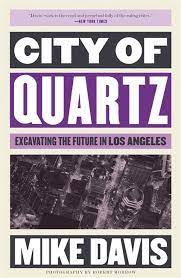Auteur Theory, LA, Overhearing a Father and his Son
As a screenwriter, you’re sometimes asked what you think about auteur theory. Auteur theory is a film criticism concept that originated in the 1950s and 1960s, primarily in the French New Wave movement. It puts forth the idea that a film director is the primary creative force behind a movie, making them the “author” of their films. They express their authorial vision in unique perspectives, themes, and creative choices.
The usual response to this question tends to be a dismissal of auteur theory, while still acknowledging the collaborative nature of filmmaking. A screenwriter will try not to sound affronted, and remember to be generous to their fellow professionals. “The making of a movie requires the expertise and contributions of a whole village,” the screenwriter might say, “director, writer, cinematographers, editors, production designers, and actors, among others. Each individual brings their unique talents, vision, and input, forming a collective effort that shapes the final product. There is no one ‘author’ of a film.”
The thing is, I disagree. I do believe in auteur theory, I do believe that there is a single, constructing, creative intention behind a film — only it is not its director, but its writer.
It seems to me that the creative control of the writer over a film is clearly different, not just in extent but in kind, from, say, the costume and art designers, the actors and even the director. The difference is that these art forms are all — at least to a certain extent — interpretive, while the writer’s work is generative. They, unlike any other creative on a film, provides the stuff which the other artists on a film interpret. The writer, uniquely, creates the film from nothing.
Of course, this isn’t always the case, as many films these days are adaptations of existing worlds and material, and there’s something to be said about screenwriting adaptation in and of itself — and I’m sure I will do that at a different time, but my point, I think, still stands.
If the word “author” is to mean anything, it must mean the creator of the world, characters and narrative of a work of art. It is why auteur theory had to be a theory at all, and not just a commonplace, understood by everyone, with no need to be theorised. The idea that a director is an “author” is a transposition of the meaning of that word — which is always used to describe the relationship of the primary creator to their work — a metaphorical usage and, in my opinion, a misleading one.

A little perversely, I’m reading a history of LA, City of Quartz by Mike Davis while travelling through the highlands. As the train I’m on passes through azure forests and rolling hills, it is conjuring for me the blasted Californian desert.
I have a strained relationship with Los Angeles. I’m not exactly a regular visitor, but I have spent quite a bit of time there in dribs and drabs, and it has been the location of several stops and starts in my career. There have been initial meetings that never went anywhere; it has been the site of outpourings of creativity, but also of stultifying blocks.
It is always very difficult to manage from a practical standpoint. We most often stay in small brick guest houses rich Angelenos were incentivised to build in the 90s, comfortable enough if you stay is only for a couple of weeks.
Since I don’t drive, I occasionally try, fruitlessly, to walk out for a quick coffee or pick up something from the supermarket, only to find myself surrounded by busy highways on every side. There are endless rides on poorly maintained buses, always following the right-angle rule of Los Angeles Public Transit: north and then west or east and then south, often with long gaps between connecting buses.
Nevertheless, City of Quartz is a gripping and meticulously researched examination of Los Angeles and its tumultuous history. Davis masterfully delves into the socio-political landscape of the city, bringing together a broad range of themes and histories, and dissecting the urban development, racial tensions, and economic inequalities that have shaped Los Angeles. The book’s wide-roaming approach, incorporating elements of urban geography, psychogeography, sociology, and history, adds depth and nuance to a city you can never really assume you know.
One of the joys of travelling is overhearing the conversations of fellow travellers, like this while sitting outside a cafe waiting for my order: between a son in his early 20s and his father, talking about their mother, who is a nervous passenger.
The father had been thinking about a trip to Europe for the last few months, but he couldn’t face it. “She screams and shouts,” he told his son, “and that makes you nervous, and makes you more likely to make a mistake.”
“Put her in the back” his son suggested brusquely. How sharper than a serpent’s tooth, to have a thankless child, I thought quietly to myself.
“She winnae go in the back,” the father replied ruefully, “best bet is to have a bottle of brandy in the seat well in front of her. She’s done that before, and it calms her down.” She may well be drinking, I thought, to forget the driver as much as the drive.